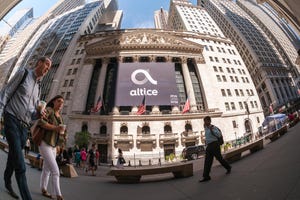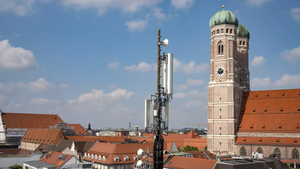Startups Size Up Supercomm
For a first-time exhibitor, there's no right answer to: How big is too big?
May 19, 2004

Let us pose an important question: How much should a startup invest in the expensive booth space at tradeshows such as the upcoming Supercomm?
MPLS access and switching vendor Mangrove Systems Inc. isn't being shy -- it is getting ready to stock its 1,200 square-foot booth with a private conference area, a lounge area, and a product demo area to show off three new products that will be announced for the first time at the show (see Mangrove CEO Goes Gaga Over GFP and Mangrove Launches MetroMPLS).
Mangrove, a first-time exhibitor at Supercomm, didn't spell out what it paid for its tradeshow floor real estate. But the standard rate, is $3,500 per 100 square-foot unit for members of the Telecommunications Industry Association (TIA), making the space Mangrove has reserved worth about $42,000.
Supercomm attendees may also notice that the food service staff around McCormick Place will be donning Mangrove-branded aprons and hats, another facet of the startup's effort to get as much attention as possible as it launches its product family.
Mangrove spokeswoman Betsy Gilbert insists the company isn't spending foolishly. "We are on a tight budget.
"Nearly everything we have done has been done in house," she says, mentioning items such as logo design and booth design, which some companies don't handle themselves.
Other first-time Supercomm exhibitors are pursuing different approaches to making a splash at the industry's largest tradeshow.
Ethernet access equipment vendor Covaro Networks Inc. is set to occupy 600 square feet of floor space with a booth that, like Mangrove, includes an integrated meeting room and conference area to give folks less of an excuse to wander off (see Covaro 'Jacks' Ethernet, Covaro Cautiously Comes Out).
Covaro opted for a 20 foot by 30 foot space after spending 11 straight tradeshows in a 10 by 10 booth, according to Fred Ellefson, Covaro's VP of marketing. "But our product is in GA [general availability] and now is the time to get the message out," he says.
Location is also important, he notes. Getting near a big vendor or a main aisle usually results in some decent overflow traffic.
Optinel Systems, which primarily sells to cable MSOs, is a first-time exhibitor this year and is only taking a 10 by 10 space, the minimum allowed at Supercomm. "We wanted to get a feel for what the telecom buyers are looking for," says Tim Dodge, the company's director of technical marketing (see Opvista Switches on Cable).
Yet another new exhibitor, Calix Networks Inc., has bought a 10 by 10 space, but the company is trying a different approach. Its product demos and meetings will actually be held at a nearby hotel ballroom, so the company is using its Supercomm booth mainly as a place to greet folk and give directions to the demo space.
Interestingly, all of these varied approaches have the same core audience: telecom carriers. So what is important about a booth when selling to carriers?
Doug Green, principal of the Bradam Group consultancy, lists three things:
1. It needs to look good to make a good impression, but it doesn't need to be expensive (see The Booth Beauty Contest). 2. It needs to be set up so that everyone that comes into the booth gets greeted and, if possible, scanned into the database. You can't afford to have an important person come in, get a cup of coffee, and leave while your CTO talks to a lab tech.3. It needs to have a lot of meeting space. Once you get a decision maker into the booth, you want to keep him or her in a comfortable, noise-free environment for as long as possible.
Green, however, notes that the hard work is done before the show, by setting up advanced meetings with carriers and making product announcements. "For a new company, making announcements at the show is dumb, as nobody is listening."
Outside the booths, opinions on other sponsorships vary. Mangrove sees its apron/hat sponsorship as a budget-conscious alternative to a large banner hung on the wall at the show.
Some say it's an idea with more sizzle than steak. "They will get about 15 minutes of everyone's attention while people are gulping down food," sniffs Kermit Ross, principal of Millennium Marketing, "and they won't make an impression on anyone."
— Phil Harvey, News Editor, Light Reading
Read more about:
OmdiaYou May Also Like










